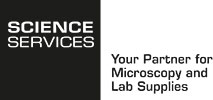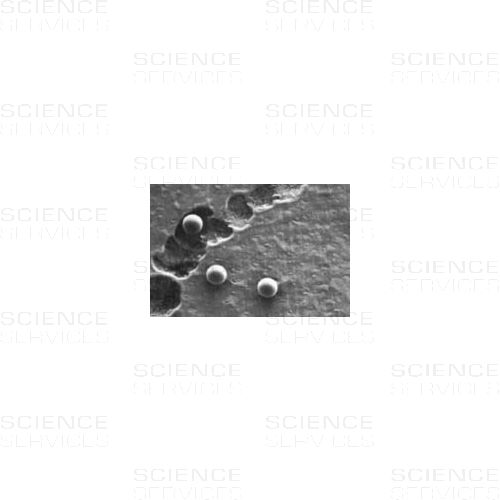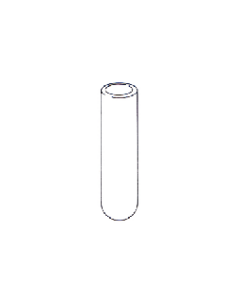Celestial Spheres, Uncoated and Dispersed
E79500-10
A mean size of 9,89µm polystyrene spheres are prepared under gravity-free conditions (Shuttle Columbia). In such conditions, exceptionally uniform spheres are obtained. These spheres can be dispersed over any specimen being examined to provide a reference standard (ASTM certified No. 1960). The size distribution is a narrow Gaussian with a standard deviation of 0.9% (excluding particles not on the main peak). There are some larger particles (less than 1% of the total) which can be excluded from measurement. A statistically significant number should therefore be measured.
Please note that the certificates covers mean size and does not carry a guarantee of size of any particular particle. Spheres are available in suspension or uncoated and dispersed on a silicon disc. (Disc to be mounted on a stub by user).
Product Details
Description
A mean size of 9.89µm polystyrene spheres are prepared under gravity-free conditions (Shuttle Columbia). In such conditions, exceptionally uniform spheres are obtained. These spheres can be dispersed over any specimen being examined to provide a reference standard (ASTM certified No. 1960). The size distribution is a narrow Gaussian with a standard deviation of 0.9% (excluding particles not on the main peak). There are some larger particles (less than 1% of the total) which can be excluded from measurement. A statistically significant number should therefore be measured.
Please note that the certificates covers mean size and does not carry a guarantee of size of any particular particle. Spheres are available in suspension or uncoated and dispersed on a silicon disc.
US Department of Commerce, National Bureau of Standard
Standard Reference Material 1960
The NBS Office of Standard Reference Materials announces the availability of a new SRM for use as a primary particle size standard. SMR 1960 is intended for use with particle size measuring instruments including electron microscopes.
Center Distance Finding (CDF), an optical technique related to array sizing, measured the numbers average particle diameter in air. The size distribution of the polystyrene spheres, as determined by DCF, is a narrow Gaussian distribution with a standard deviation of 0.9% (excluding particles with diameters not on the main peak). The number of undersized particles is negligible and the number of oversized particles is less than 1%.
Lehigh University and the National Aeronautics and Space Administration (NASA) developed the technology necessary to produce these latex particles during the shuttle mission in 1982 and 1983. The 10-micron particles in SRM 1960 were manufactured in space aboard the Space Shuttle Challenger during the NASA STS-6 mission, April 4-9, 1983. The particles were provided by NBS by NASA for certification as a Standard Reference Material for the scientific and technical communities.
The certification of this SRM was performed with the support of the ASTM-NBS Research Associate Program.
More Information
| Application |
LM
SEM
|
|---|---|
| Type |
Calibration Standards
|
| Magnification | low magnification |
| Packing Unit | each |










